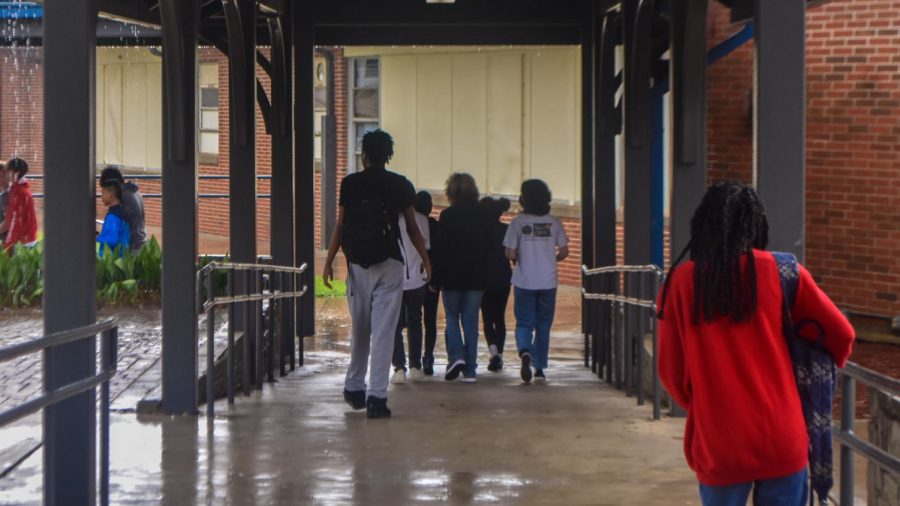Underclassmen adapt to in-person school
Freshmen file into the cafeteria, avoiding the rain. For the majority of students, this semester presents them with their first opportunity to enjoy eating lunch with their peers, an adjustment to possible social changes from lockdown. “I think I have more friends, and then I lost some. My two closest friends, I feel like we actually got closer during COVID than we were before,” magnet junior Claire Stobo said.
September 2, 2021
The COVID-19 pandemic continues to leave major and lasting changes in society. Of these examples, one can most clearly see its physical effects on the school system as social distancing and masks continue to make appearances this year. However, the social and mental changes brought about by the pandemic on students of all ages remain harder to identify. For several students, returning to in-person school after nearly two years of isolation proves challenging.
“I came here for freshman year and only had a semester and a half before the pandemic. When I went back sophomore year for three days, I couldn’t handle it because I was so underdeveloped socially,” junior Rei Denton said.
Especially for this year’s classes of sophomores and juniors, the transition from either online school to in-person or from middle school directly into their second year of high school continues to challenge them. The general consensus amongst the new classes remains that of anxiety and a feeling of missing out on key high school experiences.
“[Last year,] I stayed at home most days, and it felt like every day was the same, and so with schooling, I could never tell what day it was because everything was repeated. Sometimes I still feel like a freshman walking around the school, because I left during freshman year and didn’t get that [transition from] sophomore to junior year,” magnet junior Claire Stobo said.
The scholastic effects of a year and a half of online school continue to manifest themselves as well, with students who struggled to learn virtually beginning to fall behind the curve. Teachers have noticed this amongst sophomores especially.
“I just gave my [sophomore class] back their first test. It’s the same test I’ve given the last two years and [there are] significantly lower scores; writing skills are not where they should be,” literature teacher Cathie Lawson said.
However, teachers believe that these students can overcome the problems they face. Teachers like Lawson encourage students to reach out and ask them for help. Various teachers offer before and after school assistance for students, as well as countless resources for them to use outside of school.
“I have tutoring every day. But other teachers, either come in early or stay late, take advantage of that. Don’t just sit there and suffer, talk to them and if it’s, if it’s an emotional thing or social thing, see their guidance counselor should have a lot of great wisdom on how to help. It’s like a parent throwing their kid in the pool and saying swim, I mean that’s basically what some of them are feeling like. They just have to step up,” Lawson said.
The challenges students face may continue to plague them this semester as they learn to adapt to a typical high school environment post-COVID-19 quarantine. However, following the pattern of this previous year and a half, as students encounter difficulty, they have the potential to excel with the help of their teachers.





